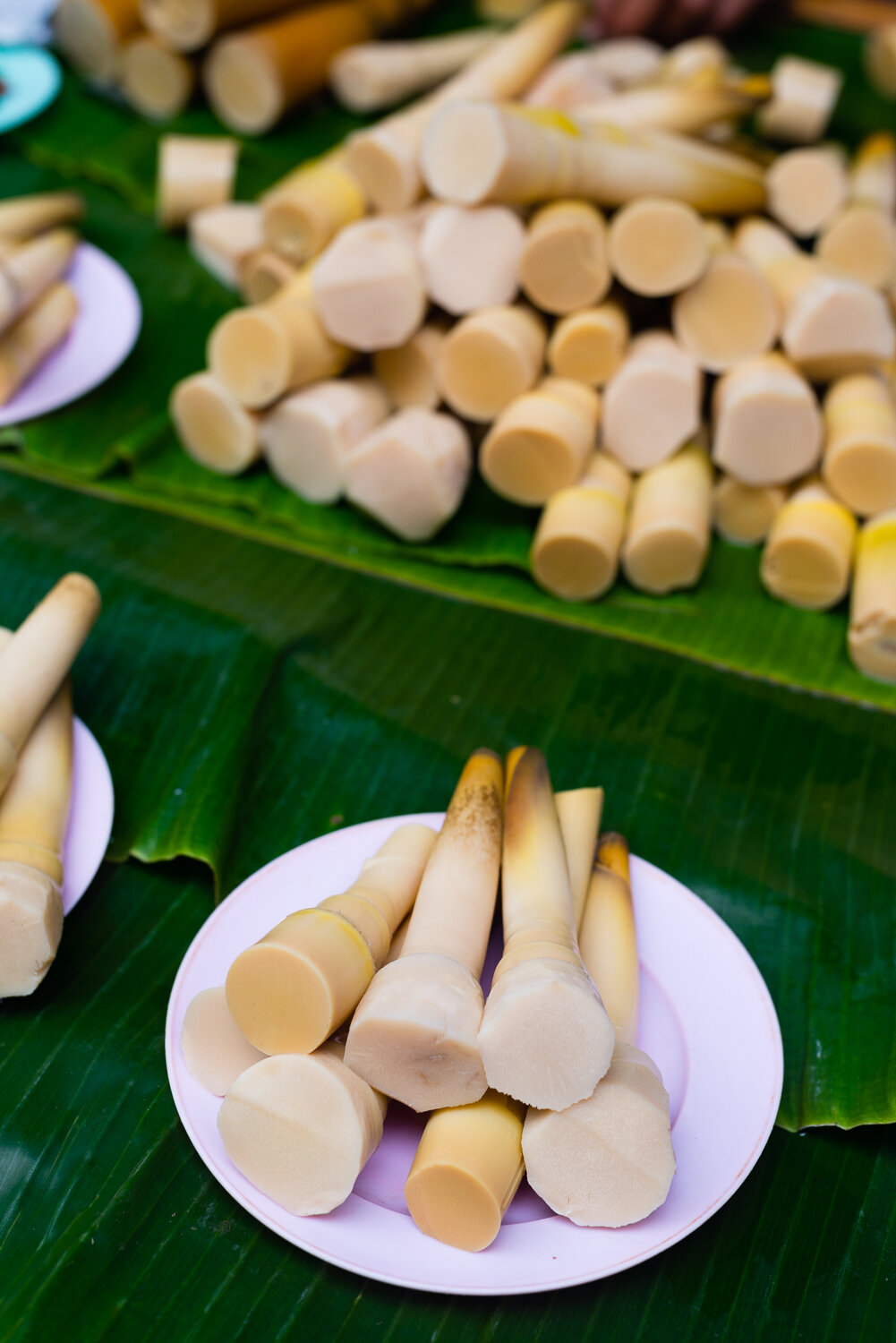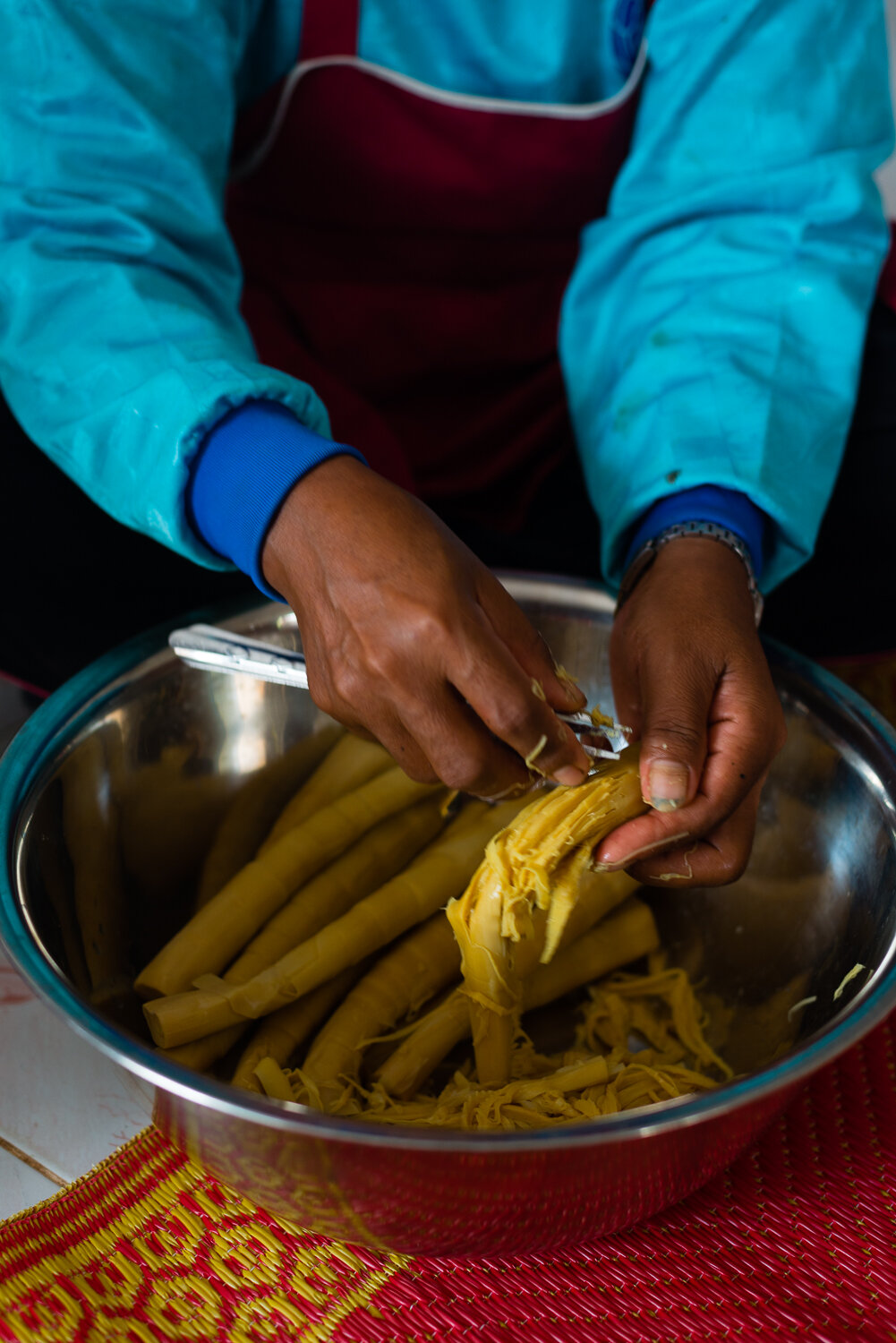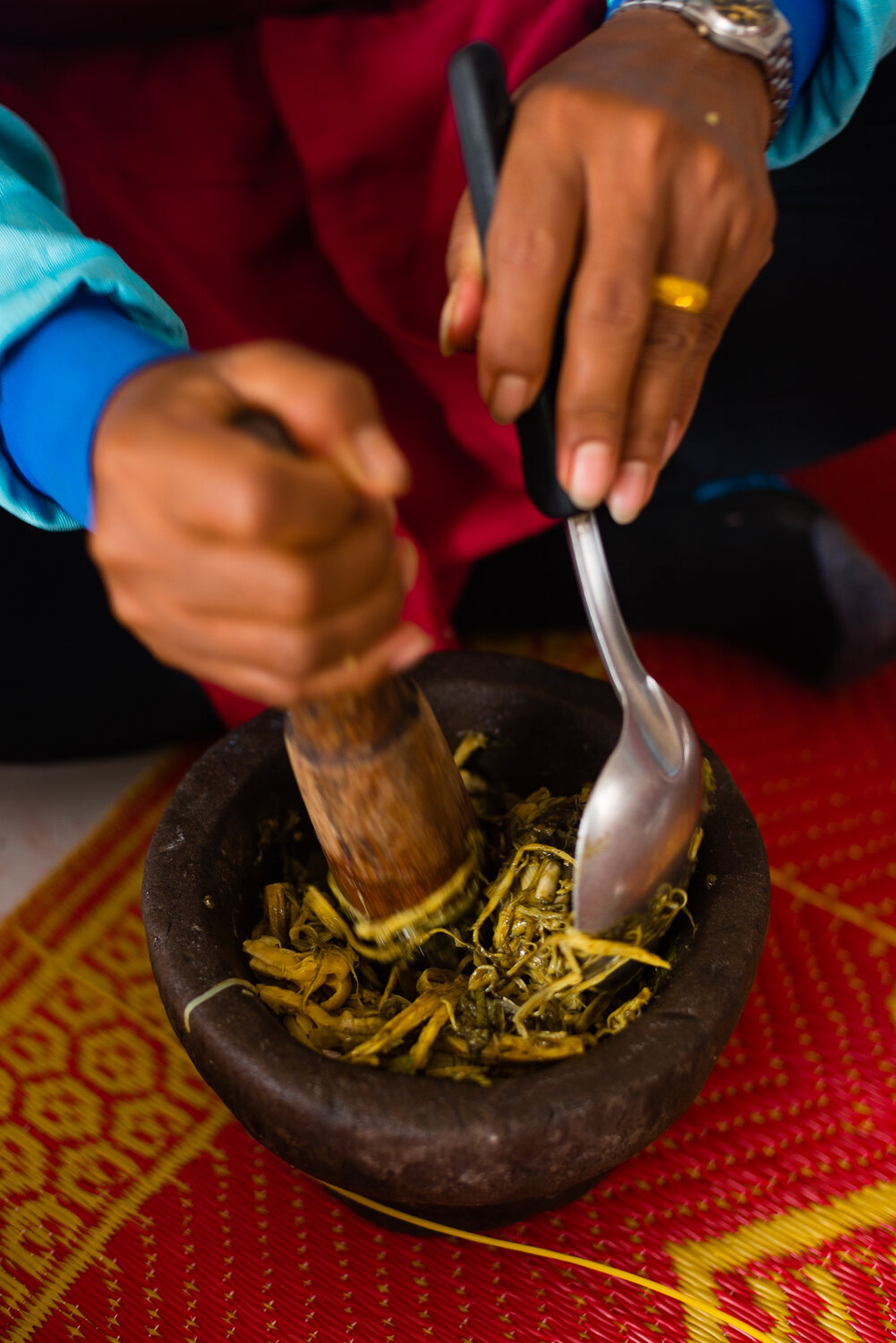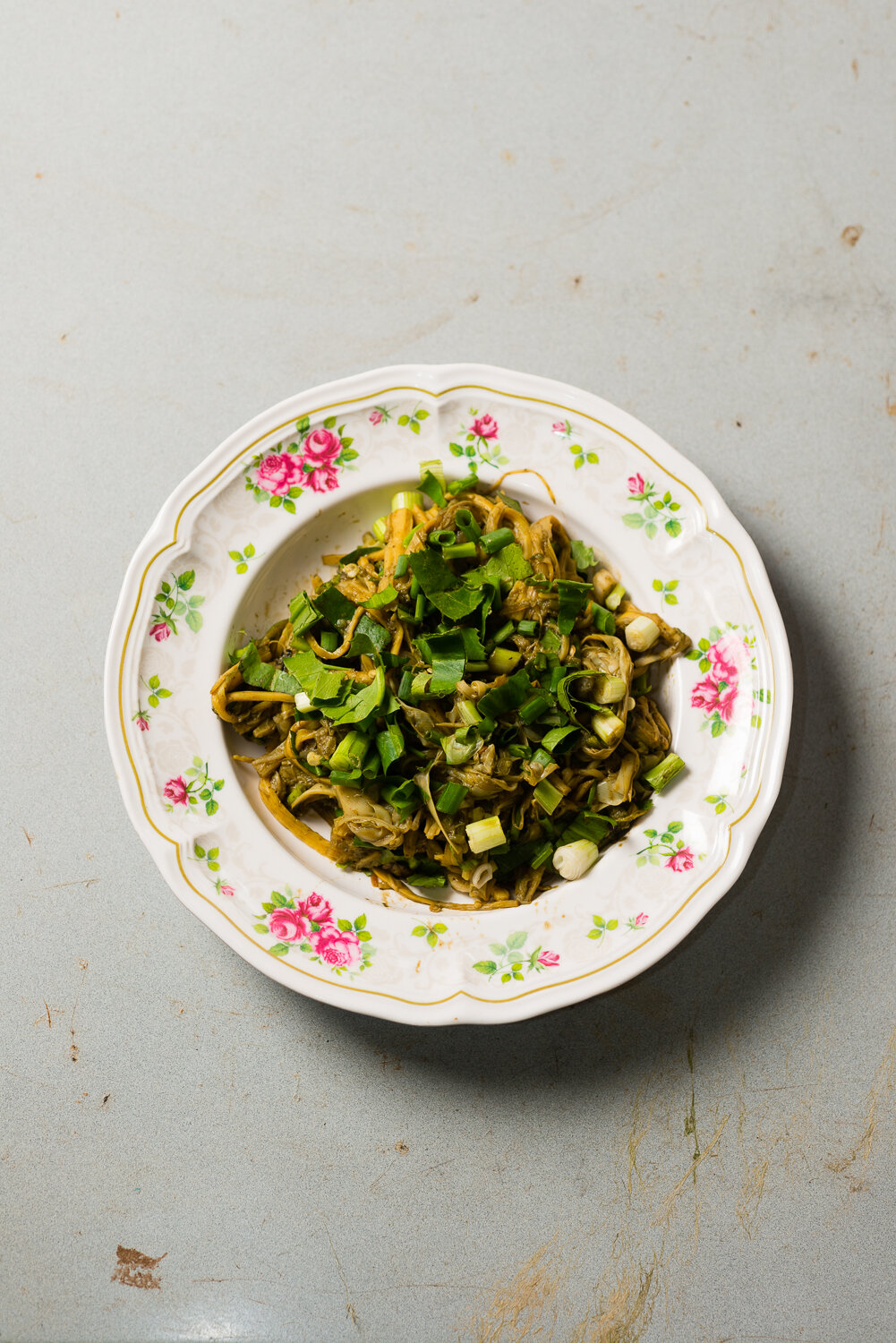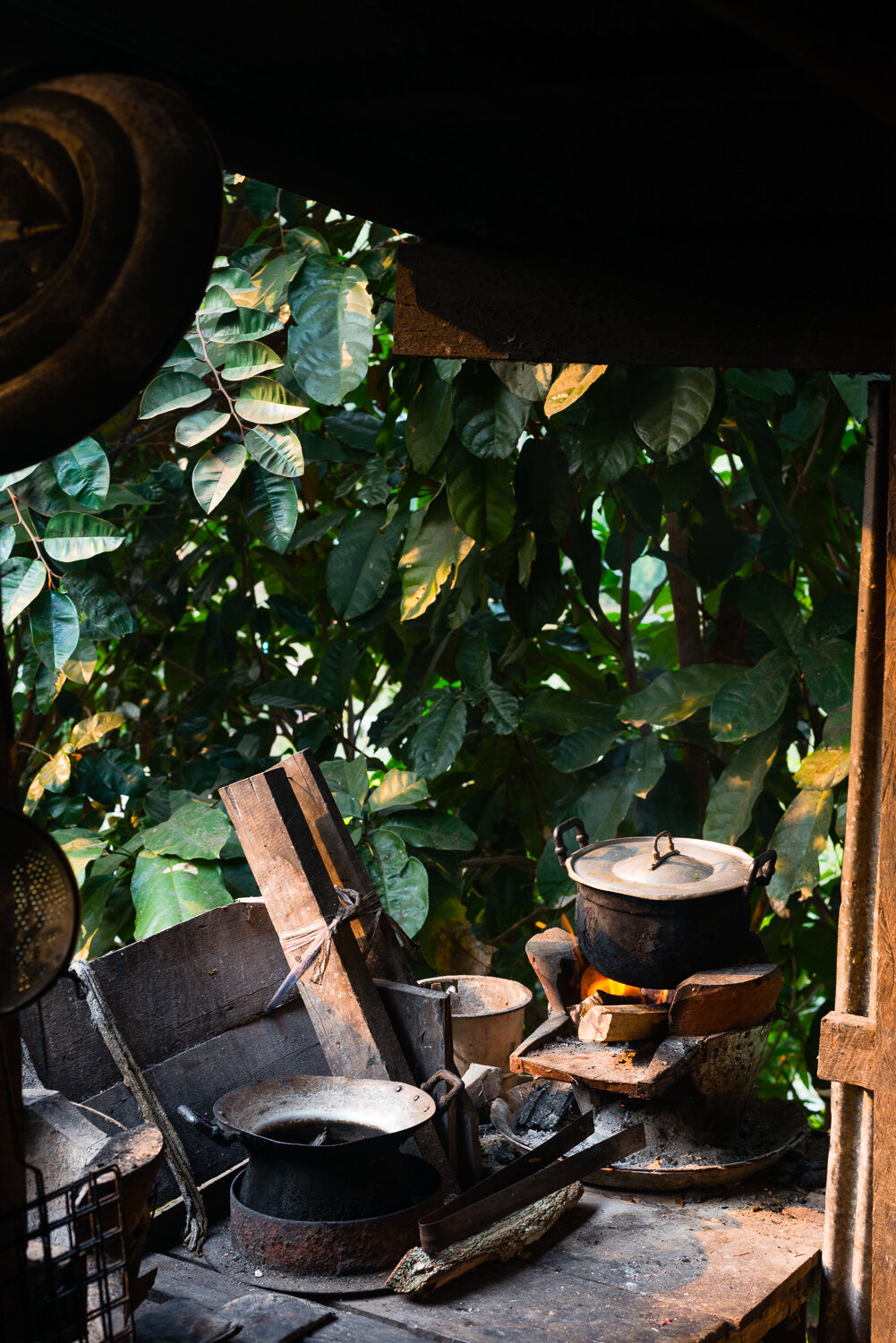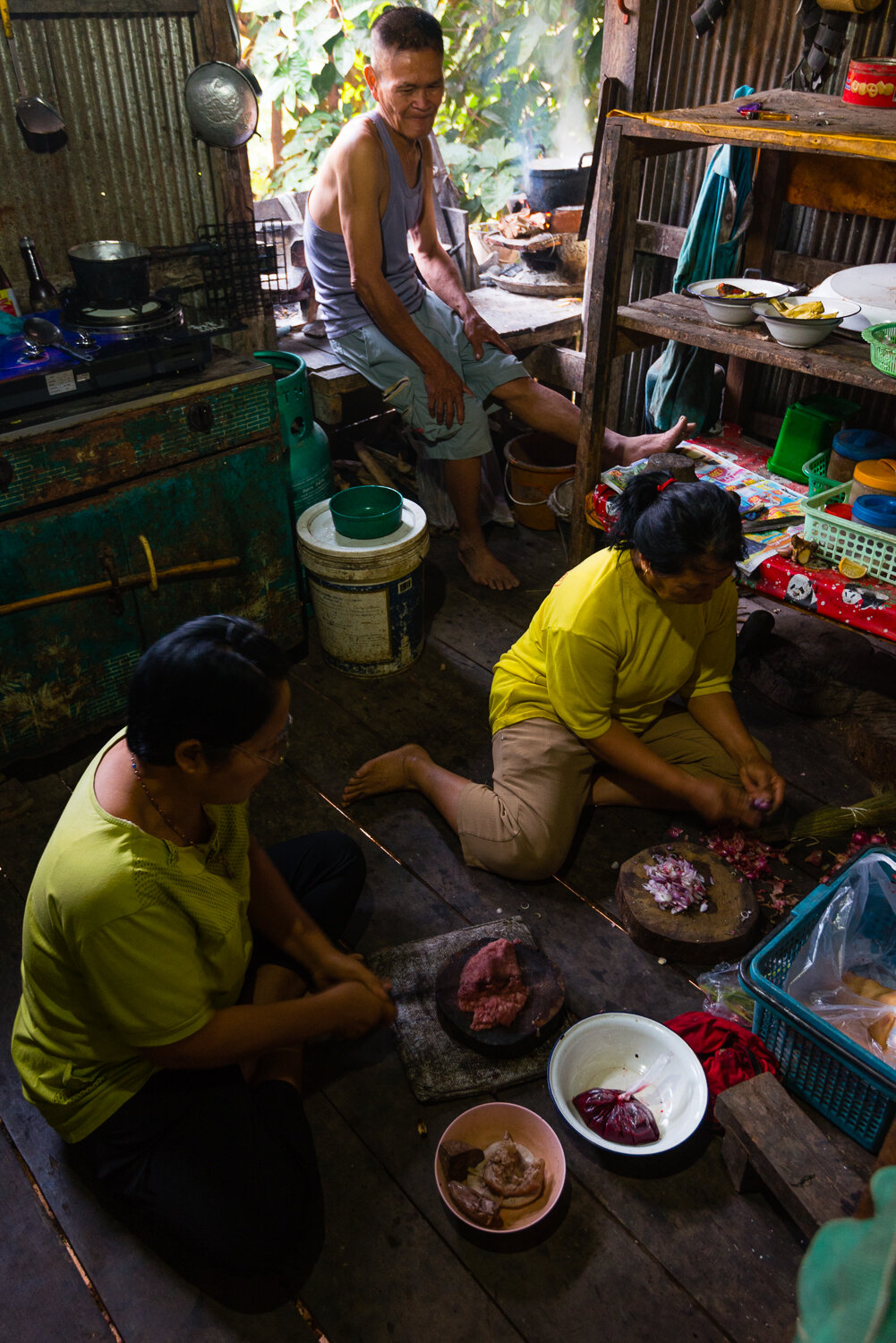“We used to use a porcupine quill to shred the bamboo!” explains Thongphian Pana, sitting on the floor of her collective’s communal kitchen, wielding a fork and a limp spear of bamboo. “But it’s hard to find one these days.”
Thongphian, a member of a ladies’ agricultural collective in the village of Ban Hat Pha Khon, in Nan, was describing the old-school way to prepare yam naw, a salad both made from and seasoned with the produce of the monsoon.
Come the annual rains, Thongphian and others in northern Thailand scan the forests for the budding shoots of a type of bamboo called naw mai rai. After being located and dug up, the bamboo is boiled for several hours to make it tender and to rid it of its inherently bitter flavor. The shoots are then peeled of their hard exterior and shredded into confetti-like strips – the step that used to necessitate a porcupine quill. The shredded bamboo is then seasoned with a basic herb paste and naam puu, a dark, bitter-tasting paste made from tiny field crabs – the other wet season specialty.
“If you don’t like naam puu, you can use fermented fish, or you could just add salt,” explains Thongphian, although her tone suggests that, in doing this, you’d lose that unique flavor and, of course, that seasonality.
Yam Naw
ยำหน่อ
A bamboo salad seasoned with northern Thai-style crab paste
Serves 4
Ingredients
2½ pounds fresh, raw bamboo
4 large fresh chilies (approximately 60 grams total)
6 shallots (approximately 50 grams total)
16 small garlic cloves (approximately 15 grams total)
½ teaspoon salt
1 tablespoon northern Thai-style crab paste
1 small bunch cilantro (approximately 5 grams), chopped
1 bunch green onion (approximately 20 grams), chopped
Thai Kitchen Tools
granite mortar and pestle
Procedure
To a large stockpot over high heat, add the bamboo, and cover with several inches of water. Bring to the boil, reduce heat to a rapid simmer, and simmer until the bamboo is very tender, which can take from 2 to 3 hours, depending on the bamboo. Drain, discarding the water. When cool enough to handle peel and discard the hard exterior layers of the bamboo, and cut off and discard the woody base. To the remaining tender core, using the tines of a fork, scrape the surface of the bamboo, shredding it into relatively thin strips; you should end up with approximately 350 grams/just under 1 pound of shredded bamboo.
While the bamboo is boiling, grill or dry-roast the chilies and shallots until charred and fragrant. Peel and discard burnt exterior from each. To mortar and pestle, add salt and chilies. Pound and grind to a coarse paste. Add the shallots and garlic, pound and grind to a coarse paste. Add the crab paste, pound and grind to a fine paste. Add the bamboo, pounding gently with the mortar and stirring with a spoon, to bruise slightly and to combine the ingredients. Add the cilantro and green onion, stirring to combine. Taste, adjusting seasoning if necessary; the yam naw should taste approximately equal parts funky, from the crab paste, spicy, and slightly salty.
Remove to a serving dish and serve with sticky rice as part of a northern Thai meal.












